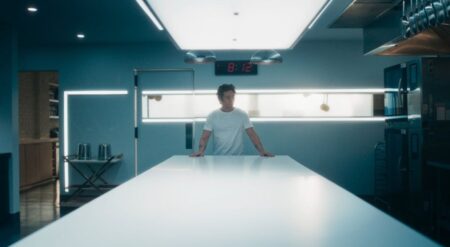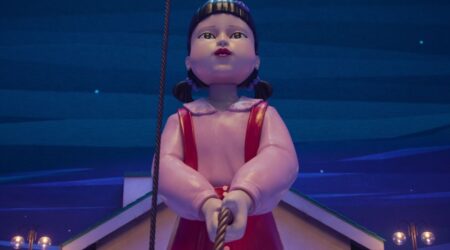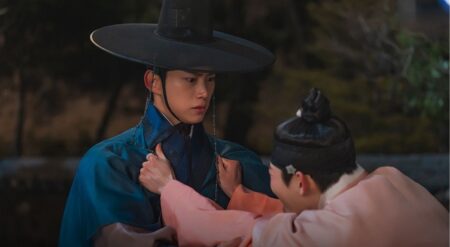
Age of Samurai: Battle for Japan is a Netflix Original Series. Told over the course of six episodes, the series focuses on the waning days of the Sengoku period (Warring States), and combines reenactments of historical battles with historians recounting the events as they transpired. The series focuses on three central figures: Oba Nobunaga (Masayoshi Hanada), Toyotomi Hideyoshi (Masami Kosaka), and Tokugawa Ieyasu (Hayate Masao).
The best part of Battle for Japan is definitely the cinematic element lent to the reenactments. The amount of detail put into the costuming and weaponry is incredible; especially the samurai armor that warriors don. From the helmets to the frightening fanged masks and of course the swords, it’s as if a museum exhibit came to life. I also loved that the cast for the historical reenactments was comprised of mostly Japanese actors, and spoke Japanese in their dialogue. Much like Sucker Punch with Ghost of Tsushima, showrunner Matt Booi has clearly studied his history and used it to weave a compelling tale.
A key example of the work put into the research by Booi and writers/executive producers Simon George and John Stead concerns Nobunaga’s approach to warfare. Nobunaga was one of the first daimyo (warlords) to teach his fellow warriors how to utilize rifles, or tanegashima as they came to be known, and developed a strategy where gunners would fire a volley, then step back and reload while archers took their place. This, alongside other strategies, helped Nobunaga to consolidate power and set the stage for Hideyoshi and later Ieyasu to properly unify Japan.
Living up to its name, Battle for Japan features intense fight sequences. Directors Carlos Henriques and Ryan Louagie do not hold back on the violence. Heads are chopped off, blood flows in rivers, and the practice of seppuku-ritual suicide-is brought up often as samurai would rather die at their own hand than an enemy’s. As one of the historians put it so eloquently, these battles “were like being trapped in hell.” Booi said in an interview that the production took inspiration from graphic novels, and these sequences do feel very artistic in how they are constructed.
The series also features interviews with several historians, including Hiro Kanagawa, Stephen Turnbull, David Spafford, and Tomoko Kitagawa. All four discuss the various intricacies of the battles conducting during the Warring States periods, as well as insight into the minds of the daimyo. I found Kanagawa and Turnbull to be the most intriguing narrators, as the former has been a presence in other shows I enjoyed-including Smallville and Altered Carbon, and Turnbull extensively studied the Japanese military period. It felt like being in history class, but with visual aids.
However, the cross-cutting between the historians and the reenactments felt rather jarring. Just when I was getting into the lives of the daimyo, it cuts to a talking head on screen. I feel that a better way this could have been executed would have been for a narrator (preferably Kanagawa or Turnbull) to provide information over the reenactment scenes, as that would provide more of a natural flow to events.
Age of Samurai: Battle for Japan blends cinematic sequences with a chronicle of Japan’s history for an immersive, if uneven, experience. Those interested in Japanese culture, as well as budding historians, will definitely want to give it a watch.
Age of Samurai: Battle for Japan is currently available to stream on Netflix.
Age of Samurai: Battle for Japan
-
Rating - 8/108/10
TL;DR
Age of Samurai: Battle for Japan blends cinematic sequences with a chronicle of Japan’s history for an immersive, if uneven, experience. Those interested in Japanese culture, as well as budding historians, will definitely want to give it a watch.







